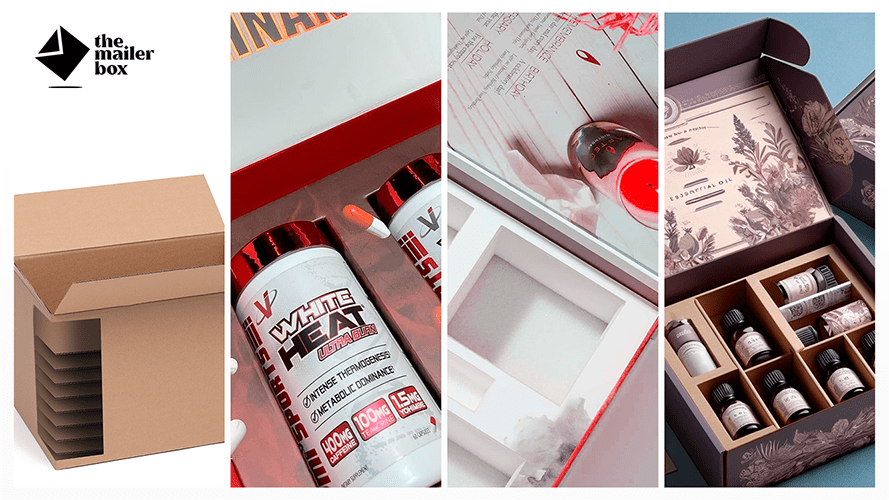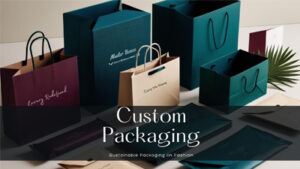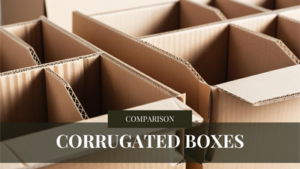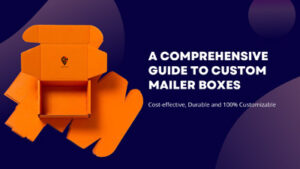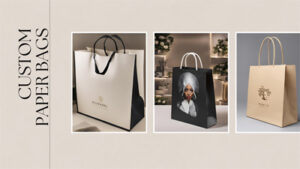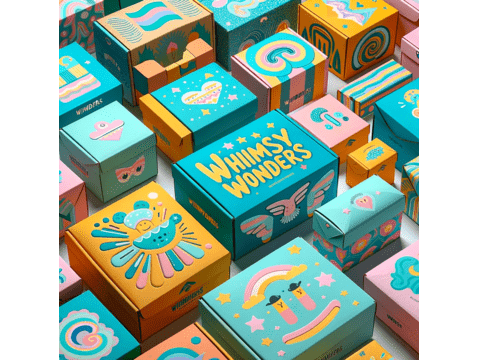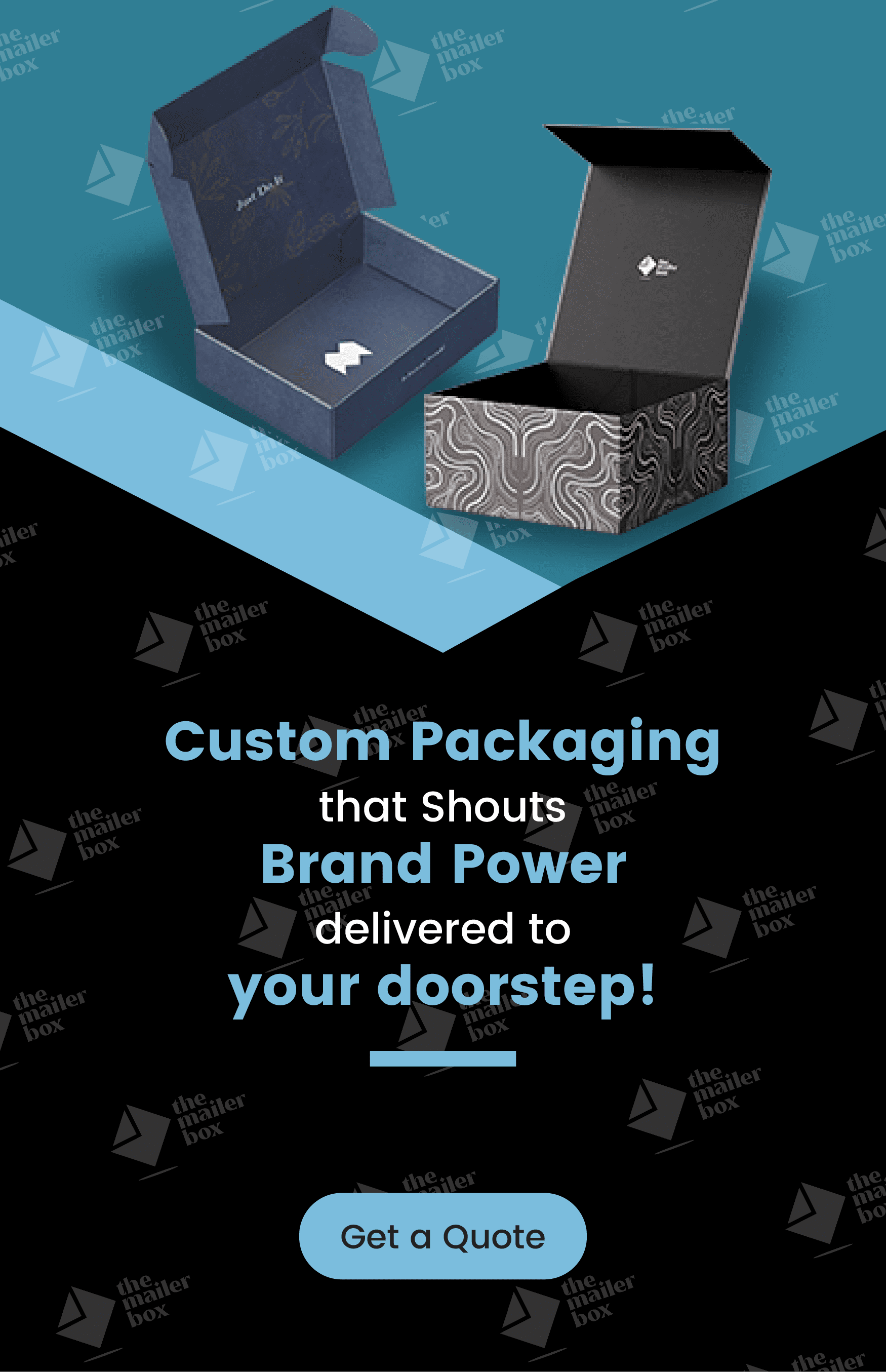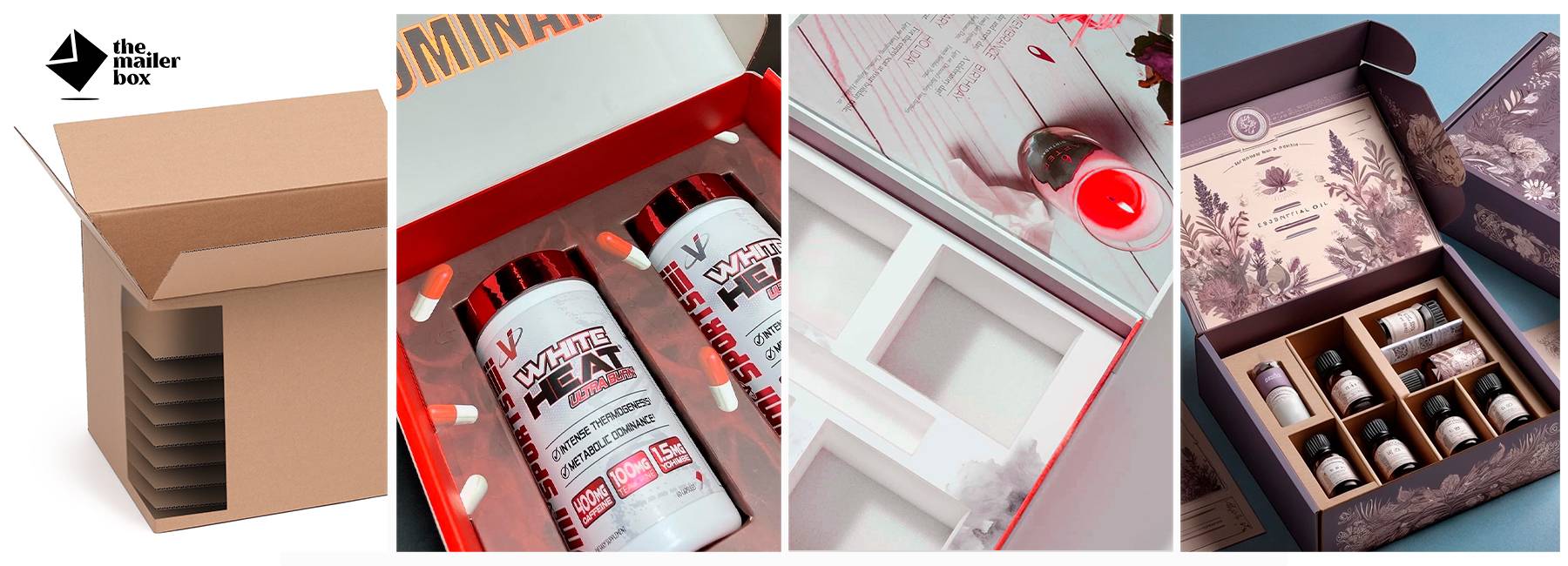
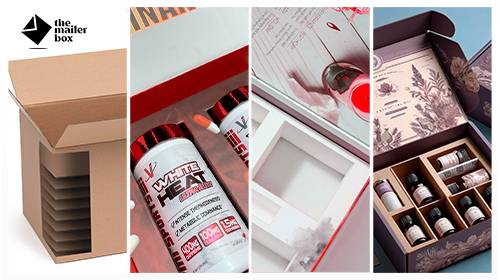
Packaging Inserts that Enhance Box Customization
Custom box inserts are a fantastic and yet often overlooked aspect of custom packaging. They help custom packaging serve one of its primary functions i.e., to keep the contents inside protected during storage and shipping.
However, while these packaging inserts are valuable in filling up the extra space in the box and keeping your products snuggly in place during transit, their contribution to the aesthetic appeal of the box customization and product branding is also extremely valuable.
Essentially, box inserts serve custom packaging by:
- Protecting the contents
- Keeping the product organized throughout transit
- Elevating the unboxing experience
- Adding to the versatility of the outer box
- Providing branding opportunities
- Achieving the above in a cost-effective way
There is plenty of information and inspiration available for box customization, most of which is primarily focused on the outer box. At The Mailer Box, however, we believe that 100% box customization means the ability to extract the most out of each element, including the packaging inserts.
But have you ever thought about the different ways in which you as a brand can incorporate custom packaging inserts into your overall packaging design?
Unfortunately, the internet doesn’t have much inspiration to offer when it comes to the humble but valuable box inserts. We have taken this opportunity of you landing on this page to present the different techniques and styles through which organizations can incorporate packaging inserts as a part of their packaging design.
These add-ons are one of the most cost-effective solutions to uplift your package aesthetics and therefore the brand image.
This article will help you understand the different types and styling options when it comes to custom packaging and packaging inserts.
Let’s get started.
Die-Cut Packaging Inserts
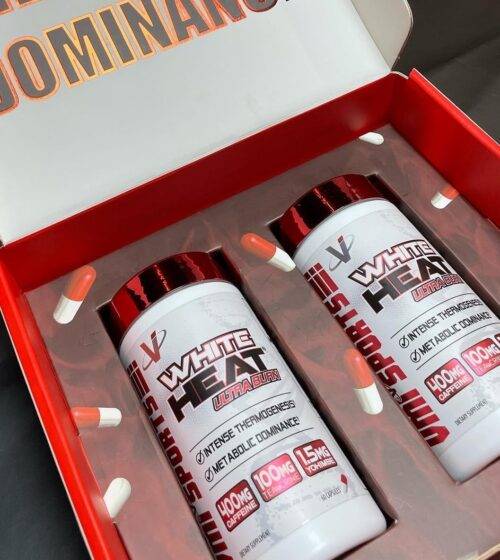
Saying that die-cutting is often the lifeblood of the paper packaging industry will not be a misstatement or even an overstatement. It is due to the technique of die-cutting that such precision throughout the custom packaging boxes is achieved.
It is also because of the process of die-cutting that the unit cost of paper packaging is reduced for repeat and bulk orders (once the die is set up, it is more cost-effective to re-run or keep on running the equipment).
The same importance of die-cutting also applies to packaging inserts. Achieving the fit of shape and size of the inserts (i.e., in line with the product as well as to that of the outer box) is as critical as that of the outer box.
For those who are not as well aware of the die-cutting process, especially regarding packaging inserts, let’s explain the technicality a bit further.
Die-cutting is a widely used manufacturing process that uses a machine much like a cookie cutter to trim raw materials into the required shapes and sizes. The process is quite generic such that, every time you cut a cookie, you’re essentially die-cutting.
When the same process applies to industrial or B2B uses, however, the shape and size details become more complex.
To create a die-cut insert for your custom packaging, the first step is to develop a detailed design that clearly and precisely specifies the shapes, dimensions, cuts, perforations, and print design elements of the packaging insert. With the advancement in paper packaging technology, this die-cut template is achieved through Computer-Aided Design (CAD) platforms such as Pandora, the one that The Mailer Box has partnered with.
After the template has been finalized, the die (or you can imagine it as the cookie cutter) itself is manufactured using a sheet of blade-like metal that is arranged to achieve the template’s specifications.
Next is the actual cutting process where the material for the inserts, cardboard, paper, plastic, or foam is prepared and fed into the die-cutting machine. You could stop at the standard sorting of the cut pieces from the waste, but we go the extra step of strict quality inspection and fit testing of the die-cut inserts.
Because what we deliver to our customers is nothing but the very best of paper packaging.
Layered Packaging Inserts
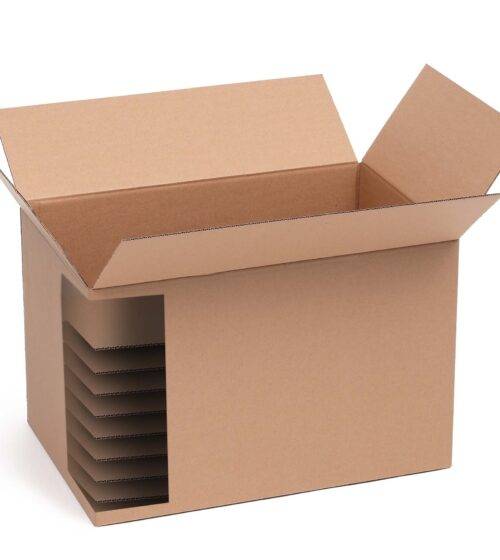
As the name implies, layered packaging inserts or layer pads are used to stack (layer) the products on top of each other in the outer box. These layer pads provide the essential stability and protection to each layer of product in the box ensuring that there is no physical or brand damage.
Depending on the client’s specifications, layer pads can be manufactured using a variety of materials including corrugated sheets, fiber-board, and/or plastic.
Layer pads are a popular choice for packaging items like cans, bottles, and/or smaller boxes in an outer box.
Dividers
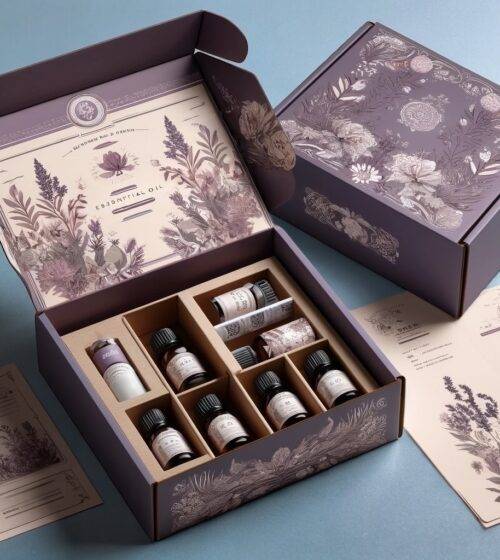
Box dividers or partitions are packaging inserts that create separate compartments within a single box. These are different from layer pads and can be customized to accommodate products of different shapes and sizes.
These partitions and dividers can be manufactured through the die-cutting process and further enhanced through print design making them a great choice for gift sets, PR boxes, subscription packaging, or any custom packaging that puts multiple products in a single box.
As with layer pads, these packaging inserts can be manufactured using a variety of materials. However, popularly these are made from corrugated sheets or cardboard paper.
Foam Packaging Inserts
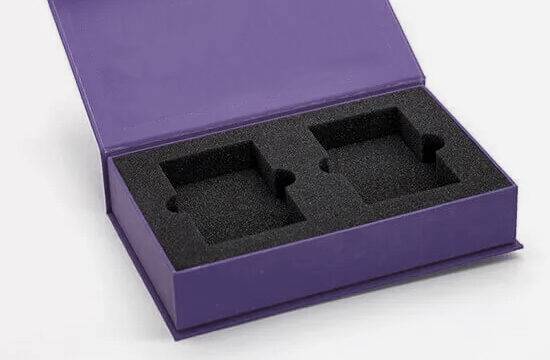
Foam inserts come into play when the products require extra cushioning and support once packed. These can be fragile items such as glassware or electronics or even very heavy or bulky items posing the risk of ripping through the outer box without additional padding.
Foam inserts are an extremely important category within the area of packaging inserts because, in several situations, they are difficult to substitute for something that would lend the same level of support and protection to the box’s contents.
But even the foam inserts can be used creatively and enhance the unboxing appeal of the overall package.
A technique we love to use is backing printed cardboard with foam cushioning for extra protection and extra oomph.
The cardboard presents a beautiful print or texture while the foam backing can keep the products snug. The final result is high-end packaging that exudes luxury from the inside out.
Foam itself comes in different types, each with its unique characteristics and uses. For packaging inserts, the popular foam material choices are Polyethylene (PE), Polyurethane (PU), and Expanded Polystyrene (EPS).
The cutting and shaping technique for foam inserts will depend on the unique product and business requirements.
| Feature | Die-Cut Inserts | Foam Inserts | Divider Inserts |
|---|---|---|---|
| Material | Cardboard, corrugated cardboard, or other rigid materials | Polyurethane, polyethylene, or other foam materials | Cardboard, corrugated cardboard, plastic, or other rigid materials |
| Customization | Highly customizable in terms of shape and size | Highly customizable, can be cut to fit specific product shapes | Customizable in terms of size and number of compartments |
| Protection Level | Good for lightweight items, provides basic protection | High protection, ideal for fragile or delicate items | Moderate protection, prevents items from shifting |
| Durability | Moderate durability, can be reinforced with additional layers | High durability, resistant to impacts, and can absorb shocks | Moderate durability, depends on material thickness |
| Cost | Generally cost-effective, especially for bulk orders | Can be more expensive due to material and customization | Cost-effective, especially for simple designs |
| Ease of Use | Easy to assemble, lightweight | Lightweight, easy to insert and remove products | Easy to assemble and configure |
| Environmental Impact | Can be eco-friendly if made from recyclable materials | Less eco-friendly, depends on foam type and recyclability | Can be eco-friendly if made from recyclable materials |
| Weight | Lightweight | Lightweight | Lightweight |
| Reusability | Limited reusability, prone to wear and tear | High reusability, maintains shape over time | Limited reusability, can wear out with repeated use |
| Application | Ideal for retail packaging, electronics, and small to medium-sized products | Ideal for packaging electronics, medical devices, and other fragile items | Ideal for separating and organizing multiple items within a single package |
| Aesthetics | Provides a clean, professional look | Can be visually appealing, especially with custom-cut shapes | Provides a neat and organized appearance |
| Assembly Time | Quick assembly, especially with pre-cut designs | Minimal assembly required, generally ready to use | Quick assembly, simply slot together |
| Storage Efficiency | Can be stored flat, saving space | Takes up more space compared to flat inserts | Can be stored flat, saving space |
Slide-in Packaging Inserts
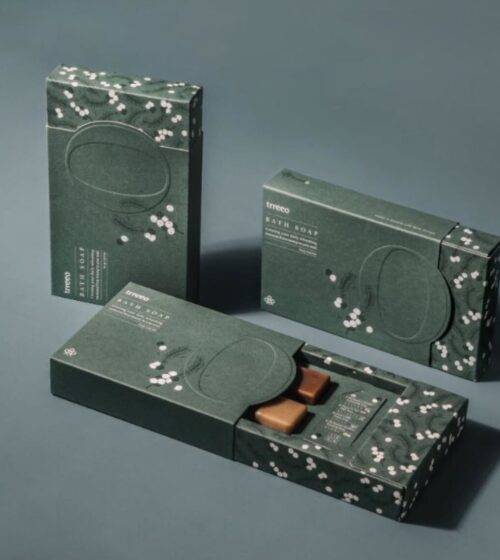
Think of the slide-in inserts as a tray or drawer that holds the items, and which is slid into a packaging sleeve. Both the slide-in inserts and its packaging sleeve cover can be printed and enhanced to meet the branding requirements.
Typically, slide-in inserts are used for electronics and gadgets (for example, you might have received your pen drive or new chargers in a sliding insert), retail packaging (for example, cosmetics, teas, and other items, and even CBD products and subscription boxes.
These packaging inserts are popularly manufactured using cardboard or plastic and can be designed to pack several items of differing shapes and sizes together.
Nested Packaging Inserts
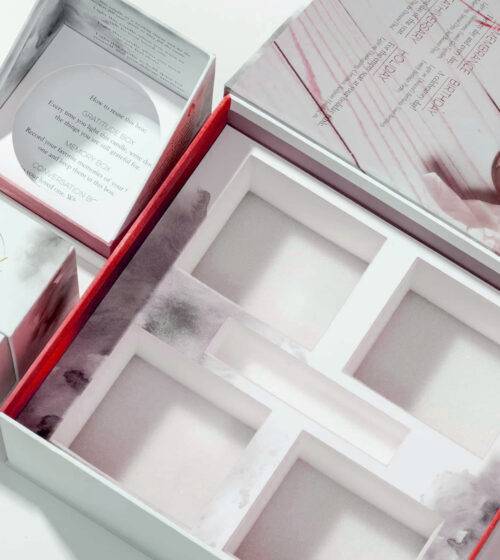
Nests of packaging inserts can be developed for any combination of styles including dividers, layer pads, and even pop-ups.
The core purpose of these inserts is to create multiple layers that can hold the box’s contents at different layers and with varying degrees of support. A great example of this is the Apple iPhones (editions before iPhone 13) that used to nest different layers of packaging inserts for different components.
manners functionality perspective, this technique allows a brand to maximize the space usage of the outer box and present several components of the box in an organized manner.
But the styling and creativity aspect of nested packaging inserts is limitless. You can combine different styles and techniques to achieve an aesthetic, creative, and impressive nest of box inserts.
This is the epitome of custom packaging and is sure to impress the customer with the thought and effort that went into packing products for them.
Pop-up Packaging Inserts
The pop-up inserts can be creatively designed to highlight any aspect of the package ranging from an inspirational brand story, a star product, a promotion, or a surprise giveaway/present for the customer. Done right, pop-up inserts will make the customer almost jump with joy and therefore have a significant impact the customer satisfaction and retention.
All this through strategically thought-out custom packaging.
Because the nature of pop-up inserts requires them to be flexible movements, they are made from cardboard, corrugated sheets, or paperboard. These materials are die-cut to achieve precision and complex shape and design and may require further assembly through adhesives.
But all that effort can have a valuable impact on the success of especially promotional packaging, retail displays, and gift boxes.
| Feature | Slide-in Inserts | Nested Inserts | Pop-up Inserts |
|---|---|---|---|
| Design | Inserts slide into predefined slots or compartments within the packaging | Inserts are nested within each other, creating layers or tiers | Inserts fold or “pop up” when the packaging is opened |
| Customization | Limited customization in terms of shape and size | Can be customized to fit specific product shapes and sizes | Limited customization, typically standard shapes or designs |
| Assembly | Easy to insert into packaging | Requires careful nesting of inserts to fit properly | Requires careful folding or assembly to “pop up” |
| Space Efficiency | Efficient use of space within the packaging | Space-efficient design allows for multiple layers of protection | May take up more space due to the pop-up design |
| Protection Level | Provides basic protection and organization | Offers good protection by separating and cushioning items | Provides moderate protection by adding visual appeal and presentation |
| Durability | Moderate durability can be reinforced with additional layers | High durability, maintains shape and structure | Moderate durability, may flatten or lose shape over time |
| Cost | Generally cost-effective, especially for bulk orders | Can be more expensive due to material and customization | Cost-effective for enhancing product presentation |
| Visual Appeal | Offers simple organization and presentation | Provides a layered or tiered presentation, visually appealing | Enhances visual appeal and presentation with a “wow” factor |
| Ease of Removal | Easy to remove from packaging | Requires careful removal of nested inserts to avoid damage | May require extra care during removal to prevent damage to the pop-up mechanism |
| Reusable | Limited reusability, can be prone to wear and tear | High reusability, can be used multiple times with proper care | Limited reusability, may lose effectiveness after repeated use |
| Environmental Impact | Can be eco-friendly if made from recyclable materials | Less eco-friendly, depends on material and recycling practices | Can be eco-friendly if made from recyclable materials |
| Typical Uses | Commonly used for organizing and separating items within packaging | Ideal for presenting products in multiple layers or tiers | Used for enhancing product presentation and creating memorable unboxing experiences |
The avenues for creativity within custom packaging are many and box inserts are just one of the many ways a brand can uplift its package aesthetics.
As seen, each type of packaging insert offers a unique support and presentation opportunity to the contents intended to be packed.
If you wish to get more information or help on any of the packaging insert types or custom packaging in general, please feel free to contact us at +1 801-783-4566 or email your query to info@themailerbox.com. We’re always here to help.

Ayesha Khubaib
Ayesha has a diverse experience in areas of marketing and management. Over the years, Ayesha has been involved in the packaging sector in various capacities and now aims to share packaging market insights with her readers
Get in touch with a custom packaging specialist now for a free consultation and instant price quote.
If you have any question, please contact us at info@themailerbox.com

